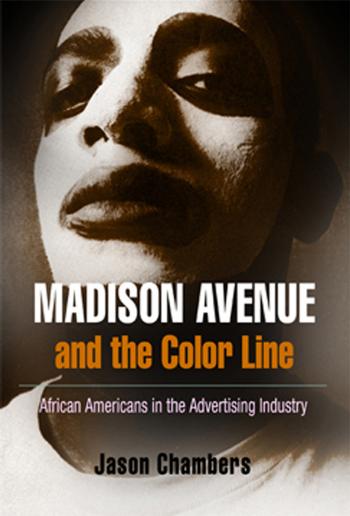Madison Avenue and the Color Line by Chambers Jason;

Author:Chambers, Jason;
Language: eng
Format: epub, pdf
Publisher: University of Pennsylvania Press, Inc.
Burn, Baby, Burn!
The riots changed everything. From 1964 through 1967, a series of urban rebellions (or “riots,” depending on your perspective) gripped the nation. The violence was costly in terms of both life and property. Over the four-year period, the violence resulted in over 130 deaths, 5,000 injuries, and over 20,000 arrests.22 Estimates of damage to property stretched into the hundreds of millions of dollars, and in some cases entire blocks of commercial and residential life disappeared. The destruction forced the issue of fair employment back to the forefront of consideration. These violent street uprisings convinced many business leaders that they must play an active role in relieving the causes behind the unrest. Many, like W. P. Gullander, head of the National Association of Manufacturers, resolved that “The problem of Watts is not a Negro problem; it is our problem as a nation.” Others agreed with the less grandiose, but more direct observation of the head of the Neiman-Marcus department store: “Once a man sees his investment in a community going up in smoke he is going to act.” As a result, an immediate demand to “do something” to produce results replaced plans that once emphasized slow growth and careful progress. Instead of just looking for college students and other qualified or experienced blacks, dozens of companies developed training and educational programs among the group reporters labeled the “hard-core unemployed.” In 1967, the National Alliance of Businessmen was founded to link the federal government with private business and coordinate the business communities' response to the crisis. Thus even companies that were not dependent on black consumer buying became actively involved developing responses to the urban crises. By late 1968, a New York Times report noted that a listing of the number of companies with outreach and training programs in urban ghettos “would read much like a stock-market table and run just about as long.”23
Similarly, the riots forced government organizations to renew their interest in addressing the problems of employment discrimination. In early 1968, the federal EEOC held hearings on discrimination in white-collar employment in a variety of industries, including advertising. Shortly after that, the NYCHR renewed its interest in the industry and launched one the most in-depth investigations of agency employment in history. Both commissions mirrored the rising militancy of minority citizens for greater tangible progress and each looked for ways to play a more vigorous role to end discrimination. Thus, New York agencies again found themselves the focus of attention from the local and federal government on the twin issues of minority employment and representation within advertisements.24
Download
Madison Avenue and the Color Line by Chambers Jason;.pdf
This site does not store any files on its server. We only index and link to content provided by other sites. Please contact the content providers to delete copyright contents if any and email us, we'll remove relevant links or contents immediately.
| Advertising | Consumer Behavior |
| Customer Service | Marketing |
| Public Relations | Sales & Selling |
| Search Engine Optimization |
Influence: The Psychology of Persuasion by Robert B. Cialdini(4198)
The Miracle Morning by Hal Elrod(3933)
The Hacking of the American Mind by Robert H. Lustig(3595)
Pre-Suasion: A Revolutionary Way to Influence and Persuade by Robert Cialdini(3437)
Unlabel: Selling You Without Selling Out by Marc Ecko(3001)
Hidden Persuasion: 33 psychological influence techniques in advertising by Marc Andrews & Matthijs van Leeuwen & Rick van Baaren(2801)
Who Can You Trust? by Rachel Botsman(2739)
Kick Ass in College: Highest Rated "How to Study in College" Book | 77 Ninja Study Skills Tips and Career Strategies | Motivational for College Students: A Guerrilla Guide to College Success by Fox Gunnar(2727)
Purple Cow by Seth Godin(2712)
Ogilvy on Advertising by David Ogilvy(2707)
I Live in the Future & Here's How It Works by Nick Bilton(2538)
This Is Marketing by Seth Godin(2503)
The Marketing Plan Handbook: Develop Big-Picture Marketing Plans for Pennies on the Dollar by Robert W. Bly(2425)
The Power of Broke by Daymond John(2391)
Building a StoryBrand by Donald Miller(2376)
The 46 Rules of Genius: An Innovator's Guide to Creativity (Voices That Matter) by Marty Neumeier(2322)
Draw to Win: A Crash Course on How to Lead, Sell, and Innovate With Your Visual Mind by Dan Roam(2286)
The Tipping Point by Malcolm Gladwell(2214)
Market Wizards by Jack D. Schwager(2177)
